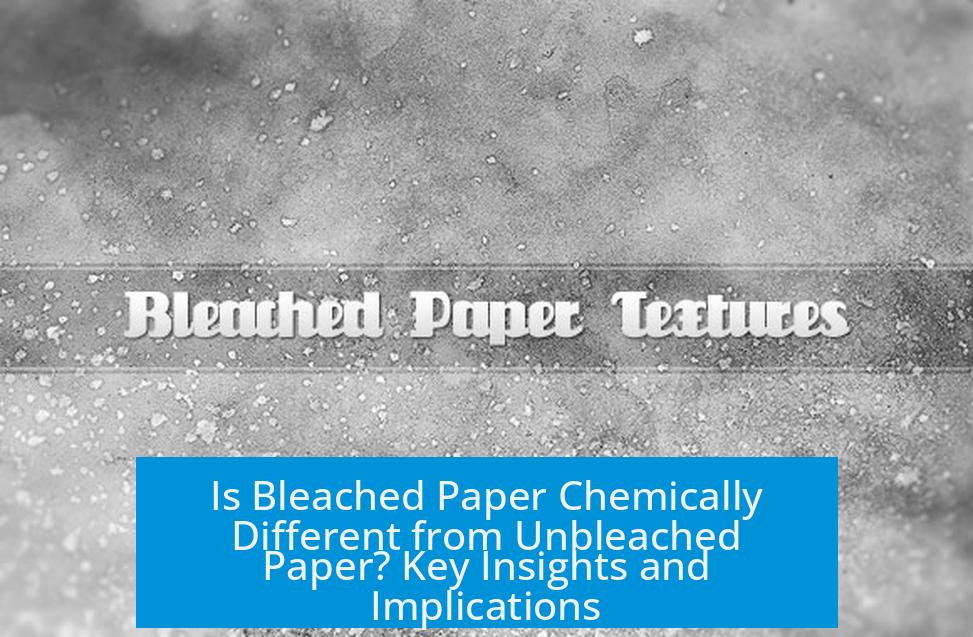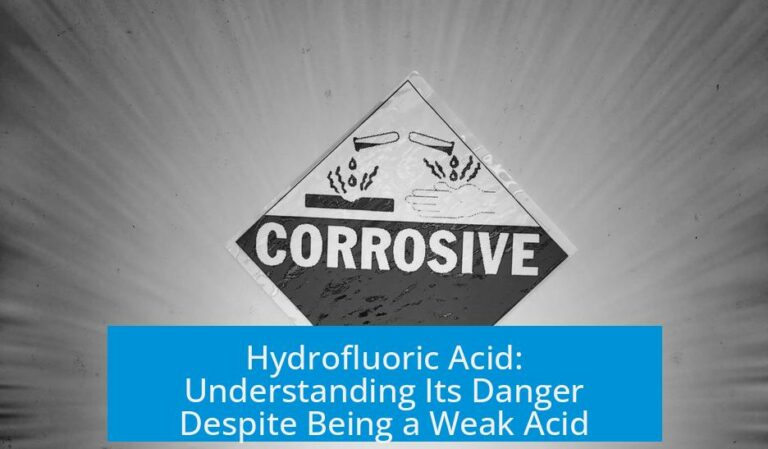Is Bleached and Unbleached Paper Chemically the Same?
Bleached and unbleached paper differ chemically, mainly due to the presence or absence of lignin. Bleached paper undergoes chemical processing to remove lignin, while unbleached paper retains it. Despite some overlap in production steps, this key difference affects physical properties, aging, color, and taste aspects. No residue from bleaching chemicals remains in bleached paper, but the functional groups on lignin and cellulose vary, influencing paper behavior and quality.
Understanding Bleached versus Unbleached Paper
Definitions and Basic Distinctions
- Bleached paper: contains little to no lignin because the lignin is chemically removed during processing.
- Unbleached paper: retains lignin within its fibers.
Lignin is a complex polymer found in wood that contributes color and rigidity to fibers. It has colored groups known as chromophores that affect the color of paper. Removing lignin is key to producing white or light-colored paper.
Some argue that unbleached paper imparts a cardboard-like taste to liquids. This is likely related to the residual lignin content and its chemical properties.
Chemical Processing Context
During pulp production, wood chips are chemically treated to separate fibers. The step called “bleaching” targets lignin removal or modification. While all wood pulp undergoes some form of treatment, the distinction between bleached and unbleached paper depends on whether lignin is removed or simply modified.
Thus, the terms “bleached” and “unbleached” specifically describe the lignin state rather than just chemical exposure.
Chemical Composition Differences
Lignin’s Role in Paper Chemistry
Lignin presence differentiates bleached and unbleached paper chemically. Bleached papers have had lignin mostly removed, whereas unbleached papers retain it.
Removing lignin alters the chemical environment around cellulose fibers. It changes cellulose’s accessibility and the paper’s overall chemical properties.
Functional Groups and Chemical Residues
The main chemical differences between bleached and unbleached paper lie in the residual functional groups on any remaining lignin. Some lignin is chemically neutralized during bleaching, while other pieces remain active.
Crucially, bleaching reagents break down into water or other harmless substances, leaving no chemical residues behind.
Impact on Material Properties
The retained versus removed lignin affects paper aging, strength, and stability. Lignin tends to cause yellowing and brittleness as paper ages. Therefore, bleached papers tend to maintain brightness and durability longer.
Bleaching and Pulp Processing Details
Stage of Bleaching in Production
Bleaching happens very early, during wood pulp preparation, before the pulp is turned into finished paper.
The treatment can involve oxidative bleaching agents, which break down lignin’s chromophores, or reducing agents that modify lignin differently.
Types of Bleaching Methods
- Chemical bleaching: Uses reagents such as chlorine compounds, hydrogen peroxide, or ozone to degrade lignin.
- Mechanical bleaching: Employs physical treatments with minimal chemicals, but often leaves lignin intact.
Technically, all paper undergoes some whitening or cleaning step, but the terminology depends on lignin content rather than the exact chemicals used.
Pulp Selection and Processing Choices
Manufacturers can select pulp processes. Chemical pulping removes much lignin, producing naturally white pulp. Mechanical pulping is cheaper, retains lignin, resulting in brownish or toned pulp, needing later bleaching for whiteness.
These choices impact paper costs, brightness, and overall properties.
Functional and Practical Implications
Taste and Color
Unbleached paper often has a brown hue from lignin’s chromophores, while bleached paper appears white or bright. Some consumers note an unpleasant “cardboard” taste when using unbleached paper with liquids. This likely derives from lignin-related compounds transferring flavor.
Aging and Durability
Lignin causes paper to degrade faster under light, heat, and humidity. Bleached paper resists yellowing and embrittlement, making it preferred for archival uses.
Industrial Paper Manufacturing
Producing filter paper or specialty grades requires precise pulp beating and addition of chemicals. These chemicals modify strength, tear resistance, gloss, and brightness. The bleaching step significantly influences these characteristics by altering lignin content.
Differences from Brown Paper Products
Some brown or grey papers, like natural toilet paper or cardboard, get their color from leftover inks, microbial breakdown products, or food residues. This differs from unbleached paper, where color comes primarily from lignin.
Cost and Recycling Factors
Removing inks and pigments during paper recycling is expensive. Manufacturers sometimes save money by producing brown paper without extensive bleaching or deinking.
Choosing unbleached paper can reduce processing steps and costs but might lower paper whiteness and longevity.
The Complexity and Variability of Paper Types
There is no universal answer to whether bleached and unbleached paper are chemically the same. Variations exist depending on the wood source, pulping method, bleaching technique, and additive chemicals.
The term “bleached” can be misleading. Sometimes lignin is partially modified but not fully removed. Other times, lignin is chemically neutralized but remains in the fiber.
Evaluating paper chemistry requires analysis of specific products, pulp history, and manufacturing methods.
Wood Composition and Lignin Role
Wood consists mainly of three polymers:
| Component | Description |
|---|---|
| Cellulose | Polysaccharide providing fiber strength |
| Hemicellulose | Shorter polysaccharide chains, less structured |
| Lignin | Complex polymer forming rigid network; contains colored chromophore groups |
Lignin’s color and chemical nature interfere with creating bright, white, and stable paper. Removing lignin is the goal of bleaching.
Summary of Key Points
- Bleached paper is chemically distinct from unbleached paper due to lignin removal.
- Lignin presence affects paper color, taste, aging, and durability.
- No chemical residues remain from bleaching agents in bleached paper.
- Bleaching happens early in pulp production, with multiple methods available.
- Pulp processing choices influence final paper chemistry and cost.
- Terminology “bleached” and “unbleached” can vary, requiring product-specific evaluation.
- Wood composition determines initial chemical makeup, with lignin playing a pivotal role.
Is bleached paper chemically different from unbleached paper?
Yes. Bleached paper has lignin removed, while unbleached paper retains lignin. This difference changes the chemical makeup, especially the presence and type of lignin-related groups.
Do bleaching chemicals remain in the final paper product?
No. Bleaching chemicals break down during processing and leave no residue. The changes are mainly in the lignin and cellulose within the paper fibers.
Does bleaching affect the properties of paper besides color?
Yes. Bleaching alters lignin and cellulose, impacting how paper ages and sometimes its taste or strength.
Is all paper bleached during production?
Technically, yes. Pulp undergoes bleaching early in production, but methods vary. Some use chemical agents; others rely on mechanical processes.
Can the term “bleached” be misleading when describing paper?
Yes. “Bleached” mainly means lignin removal. Sometimes paper is chemically treated but retains lignin, so the label can be confusing.





Leave a Comment